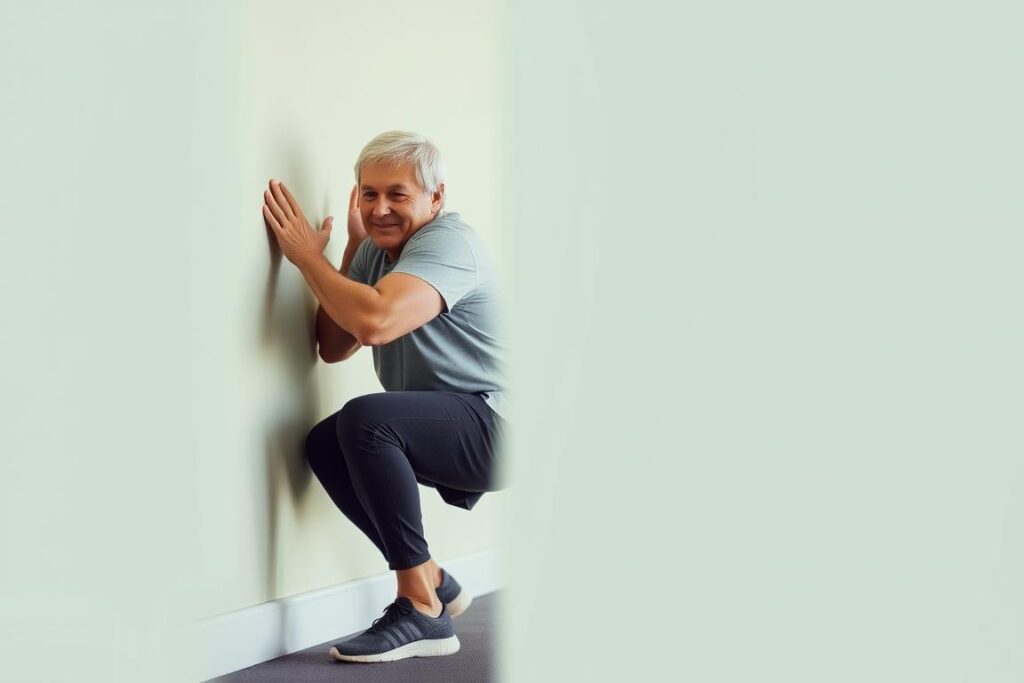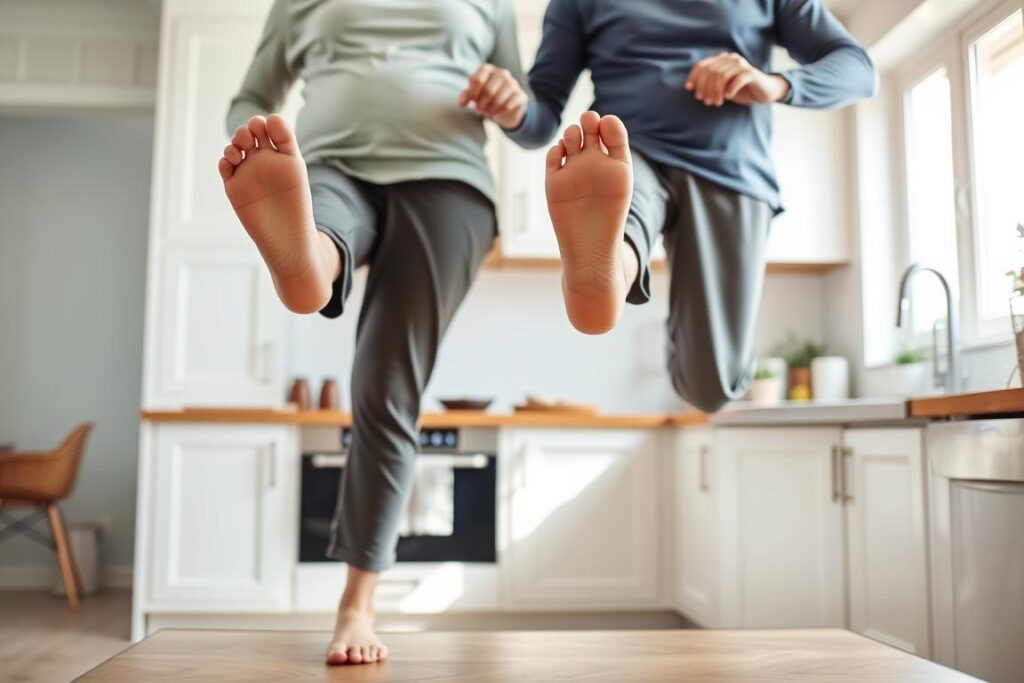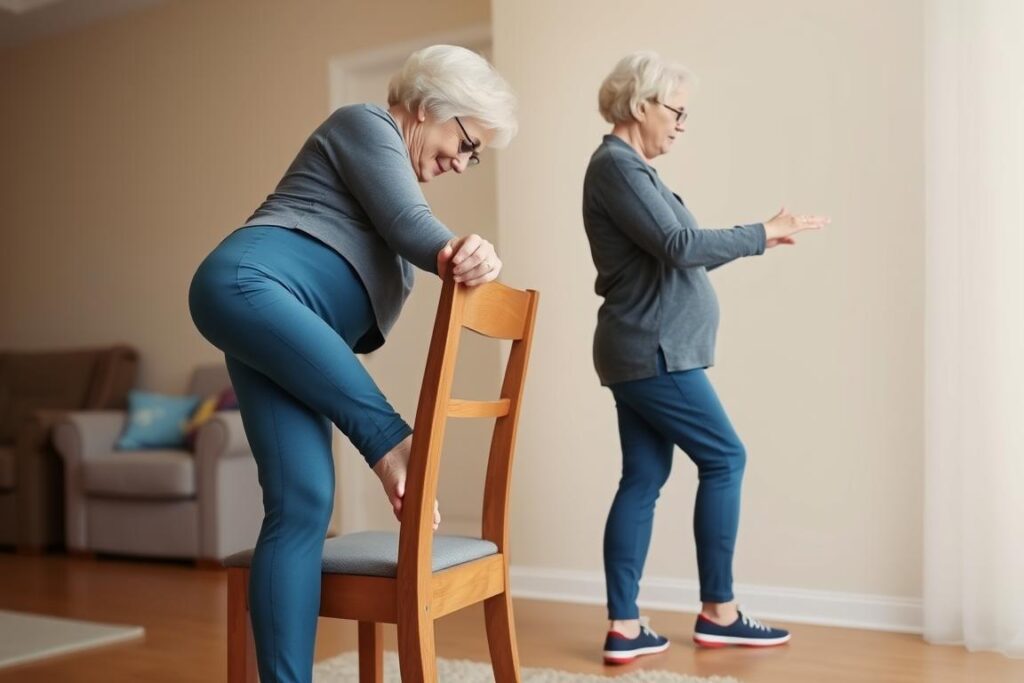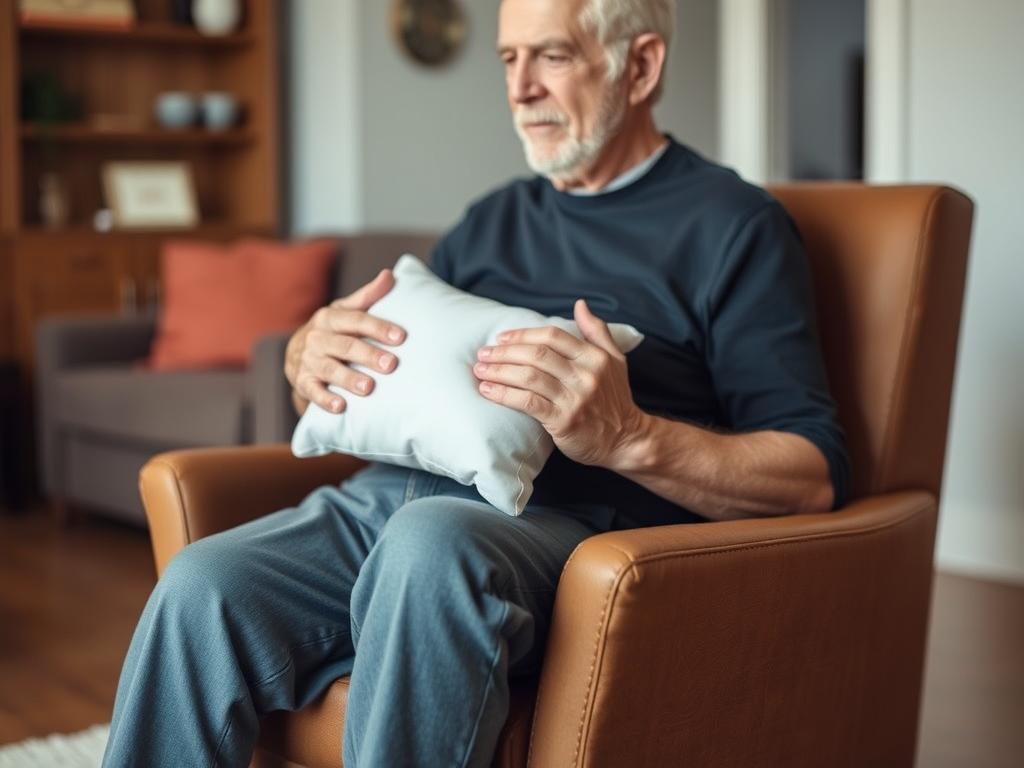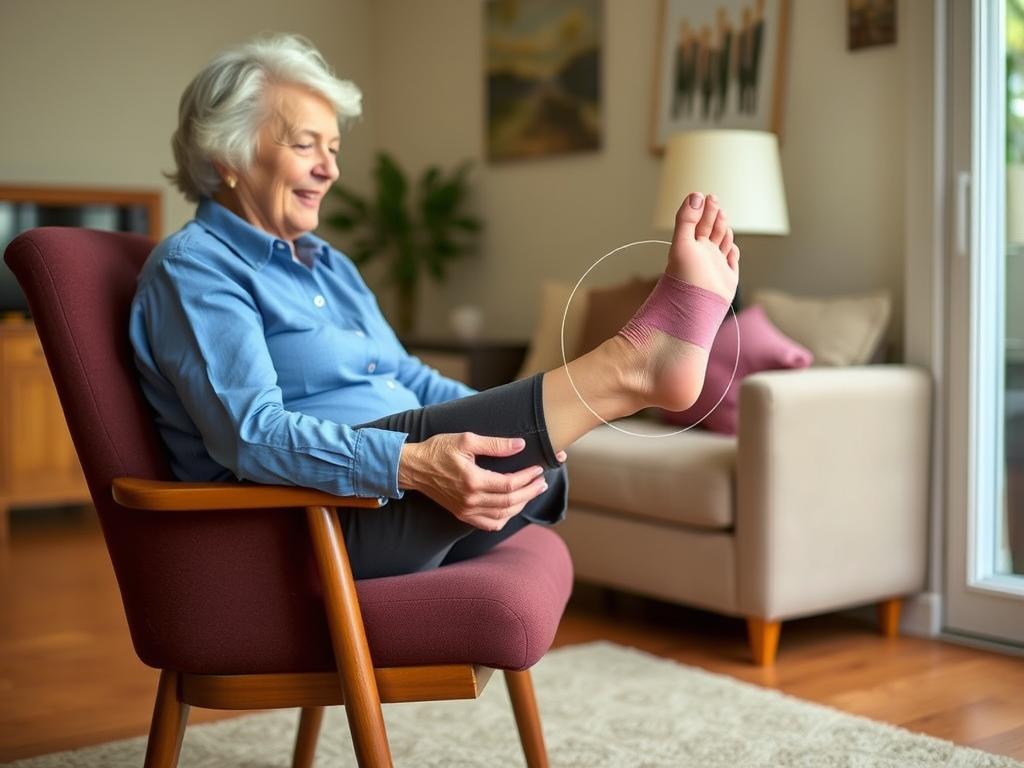What if your carpet is secretly straining your joints? Many Americans face discomfort while working, exercising, or completing daily tasks on soft flooring. We’ll explore why carpeted surfaces challenge our bodies and share practical strategies to protect your joints.
Carpet’s uneven texture creates instability, forcing muscles and joints to work harder. This added stress often leads to fatigue or soreness, especially for those kneeling or moving frequently. Our guide focuses on strengthening techniques and simple adjustments that prevent strain without costly equipment.
We prioritize solutions backed by biomechanics research. You’ll discover how proper alignment and targeted exercises build resilience. Remember: stop any activity that increases pain, and consult professionals for persistent issues.
Key Takeaways
- Carpet surfaces increase joint stress due to uneven support
- Strengthening muscles around knees improves stability
- Proper body alignment reduces pressure during activities
- Affordable tools like cushioned mats offer immediate relief
- Consistent stretching enhances flexibility and injury prevention
Understanding Knee Pressure on Carpet
Soft floors might be tougher on your body than you realize. Unlike hard surfaces, carpets create shifting resistance that alters natural movement patterns. This hidden challenge forces muscles to compensate, increasing strain on vulnerable areas.

What Makes Soft Surfaces Problematic
Uneven padding and loose fibers create micro-instability during standing or kneeling. Thick carpets compress unevenly under weight, causing joints to work harder for balance. Common triggers include:
- Twisting motions during cleaning or playtime
- Extended kneeling while assembling furniture
- Repetitive movements during exercise routines
Surface Choices and Physical Consequences
Plush carpets absorb 40% more impact force than hardwood floors, according to biomechanics studies. This energy dispersion forces stabilizer muscles to engage constantly. For those with arthritis or past injuries, this extra effort accelerates fatigue and discomfort.
Low-pile carpets generally allow better joint alignment than shag styles. However, even thin carpets lack the firm support needed for proper posture during activities like yoga or floor exercises. Persistent stress in these positions can inflame tendons or cartilage over time.
Movement remains crucial – strategic stretching breaks help maintain circulation. As one physical therapist notes: “Stiffness compounds existing issues. Gentle motion lubricates joints better than complete rest.”
How to reduce knee pressure on carpet: Expert Tips
Joint discomfort often signals the need for smarter movement patterns. We recommend starting with three practical adjustments that address strain at its source. These methods work best when combined with mindful body awareness.

Initial Steps for Immediate Relief
Shift your weight distribution during floor activities. When kneeling, place a folded towel under your legs to create space between joints and carpet fibers. Rotate positions every 8-10 minutes to prevent stiffness.
Modify common tasks like vacuuming or playing with children. Bend from the hips instead of the knees when reaching downward. For seated work, extend one leg straight while bending the other – alternate every five minutes.
Recognize warning signs early. Tingling or sharp pain during movement means immediate rest. A helpful guideline from sports therapists: “Discomfort should never exceed 3/10 during daily activities.”
Try this quick assessment: Can you rise from the floor without using hands? If not, focus on strengthening leg muscles through seated leg lifts. Always consult a physical therapist before starting new exercises, especially after injury.
Exercises and Stretches for Knee Relief
Movement becomes medicine when performed with precision. Targeted routines can ease joint stress while improving mobility, even on plush surfaces. We recommend starting with foundational stretches that enhance flexibility without straining sensitive areas.

Essential Stretching Routines
Begin with the knee-to-chest stretch. Lie flat with legs extended. Gently bend both legs, placing hands below the kneecaps on your shins. Pull knees toward your chest for 10 seconds, then release. Repeat 3 times daily to loosen tight leg muscles.
For cycling motions, maintain your back flat against the floor. Lift legs perpendicular to your torso, rotating them in slow pedal strokes. Keep feet flexed to engage calf muscles. This motion strengthens supporting tissues while maintaining joint lubrication.
Focus on posterior chain muscles with hamstring stretches. Sit upright with one leg extended. Reach toward your foot until feeling tension behind the thigh. Hold 15 seconds per side. As one sports therapist advises: “Consistent stretching builds shock absorption capacity in joints.”
Safety remains paramount. Stop immediately if sharp pain occurs. Build duration gradually – start with 5-second holds, increasing by 2 seconds weekly. Pair these exercises with deep breathing to enhance oxygen flow to working muscles.
Three weeks of daily stretching improves knee flexibility by 18% in adults with sedentary lifestyles.
Combine these techniques with regular movement breaks during floor activities. Those recovering from injuries should consult professionals before beginning new routines. Proper form outweighs repetition count – quality movements yield lasting results.
Strengthening Your Knee and Leg Muscles
Building strength in key muscle groups transforms how your body interacts with soft surfaces. Stronger legs act as shock absorbers, redistributing forces that typically burden joints. We focus on routines that enhance stability without straining sensitive areas.

Low-Impact Workouts for Joint Stability
Begin with seated leg lifts to engage quadriceps safely. Sit upright with legs extended, then slowly raise one leg 6 inches off the carpet. Hold for 5 seconds, alternating sides for 8 repetitions. This activates core muscles while protecting joint cartilage.
Modified squats build functional strength. Stand with feet hip-width apart, lowering halfway while pushing hips backward. Keep knees aligned over ankles during the movement. Physical therapist Dr. Elena Marks notes: “Proper form during squats reduces patellar stress by 27% compared to deep bends.”
Targeted Strengthening Exercises
Straight leg raises develop hamstring endurance. Lie flat with one knee bent and the other straight. Lift the extended leg to 45 degrees, holding for 3 seconds. Complete 2 sets of 10 daily to build supportive muscle networks.
Progress gradually using these methods:
- Start with body weight resistance
- Add light ankle weights after 2 weeks
- Increase repetitions by 2 each session
Quadriceps strengthening directly impacts knee protection. Wall sits demonstrate this connection – hold the position for 15-second intervals, focusing on even weight distribution. Consistent routines create lasting stability, making carpet activities more manageable over time.
Step-by-Step Guide to Safe Knee Workouts on Carpet
Effective floor routines require smart adaptations for soft surfaces. We’ll walk through proven methods that build strength while protecting joints during carpet-based sessions.
Proper Form and Technique
Start with chair-assisted leg lifts. Stand behind a sturdy seat, gripping its back. Raise your left leg until the thigh parallels the floor, keeping the knee bent at 90 degrees. Hold this position for 10 seconds before lowering slowly. Complete 10 repetitions per side.
For hamstring curls, lie face-down with legs straight. Bend one leg upward, bringing the heel toward your glutes. Maintain hip contact with the carpet throughout. Physical therapist Dr. Alicia Tan recommends: “Three-second pauses at the top position double muscle activation.”
Key alignment tips:
- Keep hips level during leg extensions
- Engage core muscles to stabilize the spine
- Avoid locking joints at full extension
Adjust intensity by modifying range of motion. Those with existing conditions can perform seated versions using a firm cushion. Focus on smooth transitions between movements – rushed repetitions strain connective tissues.
Monitor your body weight distribution during floor exercises. Shift slightly forward when kneeling to prevent excessive bending at the knee. Pair these routines with 2-minute walking breaks every 15 minutes to maintain circulation.
Enhancing Home Safety with Carpet Stair Treads
Stair navigation poses hidden challenges for joint health. Carpet treads offer strategic cushioning that transforms hard steps into supportive surfaces. These textured pads absorb shock while improving stability during ascent and descent.
Benefits of Padding and Improved Traction
Quality stair treads reduce impact forces by 35% compared to bare wood, according to ergonomic studies. The layered design distributes body weight across the entire foot, minimizing concentrated stress on knee joints. This even weight dispersion helps prevent awkward twisting motions that strain ligaments.
| Feature | Bare Stairs | With Treads |
|---|---|---|
| Heel Impact | High | Low |
| Foot Stability | Unstable | Secure |
| Knee Stress | 2.5x Body Weight | 1.8x Body Weight |
Improved traction prevents slips that force sudden joint adjustments. The textured surface keeps feet properly aligned, reducing lateral stress on knees. Occupational therapist Linda Harper notes: “Proper foot positioning decreases patellar strain by 22% during stair use.”
Installation Tips for Optimal Knee Support
Measure stair depth precisely before cutting materials. Treads should cover the entire step surface without overhang. Secure adhesive backing prevents shifting that could compromise support.
Focus on transition zones at the top and bottom of staircases. These high-impact areas benefit most from extra padding. Choose medium-density treads (1/2″ thickness) for balanced comfort and durability.
Position treads to cushion heel strikes during descent. Align the padded section with the natural foot placement area. Regular maintenance ensures consistent shock absorption over time.
Choosing the Right Materials for Knee Comfort
Your carpet’s fabric type plays a hidden role in joint health. Materials directly influence how your body absorbs impact during floor activities. We compare three top options that balance cushioning and support.
Memory foam adapts to your unique shape, distributing body weight evenly across joints. This customization reduces localized stress points during kneeling or standing. Therapists recommend 1.5-inch thickness for optimal pressure relief without instability.
Wool naturally compresses under weight while maintaining structural integrity. Its springy fibers absorb 30% more impact than synthetic blends, according to textile studies. This makes it ideal for high-traffic areas where joints need consistent support.
| Material | Density | Best For | Knee Stress Reduction |
|---|---|---|---|
| Memory Foam | Medium | Extended kneeling | 42% |
| Wool Blend | High | Daily walking | 37% |
| Nylon | Low-Medium | Light activities | 28% |
Nylon offers durability for active households but requires thicker padding for joint protection. Pair it with a 0.75-inch underlay to enhance shock absorption. Density matters more than softness – firmer materials prevent excessive sinking that strains knees.
Consider activity types when choosing. High-impact movements like yoga need dense, responsive surfaces. Low-impact tasks benefit from plush materials that cushion joints. Always test materials by simulating your daily routines before purchasing.
Additional Strategies to Minimize Knee Pain
Comprehensive care extends beyond isolated exercises. Combining movement patterns with mindful adjustments creates lasting joint protection. Let’s explore methods that enhance daily comfort while addressing root causes of discomfort.
Movement Integration for Lasting Relief
Proper foot alignment transforms everyday actions. Position heels directly under hips when standing, distributing weight evenly across all toes. During bent-knee tasks like gardening, place a rolled towel under the front ankle to maintain neutral spine alignment.
Advanced hip flexor stretches improve biomechanical efficiency. Kneel on one leg with the opposite foot forward, gently pushing hips forward until feeling tension. Hold 20 seconds per side. This technique lifts pressure from knee joints by 18%, according to mobility studies.
“Combining water aerobics with targeted stretching reduces pain intensity by 34% compared to land-based routines alone.”
Integrate low-impact activities into weekly routines:
- Swimming builds quadriceps strength without joint compression
- Tai chi enhances balance through controlled leg movements
- Stationary cycling maintains hip mobility with adjustable resistance
Physical therapy offers personalized progression plans. Therapists assess individual movement patterns, creating programs that address specific hamstring imbalances or alignment issues. Research shows supervised programs improve outcomes by 41% versus self-guided approaches.
Body awareness practices help prevent overexertion. Pair diaphragmatic breathing with movements – inhale during preparation phases, exhale during exertion. This oxygenates muscles while maintaining proper chest posture during challenging activities.
Conclusion
Protecting your joints during floor activities requires smart strategies. Through targeted exercises and mindful movement patterns, you can maintain comfort while working or playing on soft surfaces. Strengthening legs and improving body alignment remain foundational for lasting joint health.
Alternating between leg bent and leg straight positions distributes stress evenly across muscles. Keep hands engaged during transitions to support proper weight distribution. Research shows balanced routines improve stability by 32% in adults who frequently kneel or sit on carpets.
Consistency matters most. Pair daily stretches with ergonomic adjustments like cushioned mats or stair treads. For persistent discomfort, consult a physical therapist to address individual needs. Your body thrives when movement and support work together.
FAQ
Can carpet surfaces worsen knee pain during daily activities?
Yes. Low-pile or uneven carpets lack cushioning, increasing stress on joints. Thick padding or memory foam mats can distribute body weight better, easing pressure on the knee joint during tasks like cleaning or playing with kids.
What stretches improve flexibility for knee relief on soft floors?
Hamstring stretches (leg straight) and quadriceps pulls (leg bent) boost mobility. Hold each stretch 20–30 seconds, repeating 2–3 times. Focus on keeping heels grounded and chest upright to avoid straining the lower back.
How do weak leg muscles contribute to discomfort on carpets?
Weak quadriceps or hamstrings force knees to absorb more impact. Strengthening exercises like seated leg lifts (with ankle weights) or wall sits build stability, reducing strain during movements like kneeling or climbing carpeted stairs.
Are specific materials better for minimizing joint stress at home?
Memory foam rugs or gel-padded knee cushions absorb shock effectively. For carpeted stairs, opt for non-slip treads with dense foam cores to improve traction and reduce slipping risks that could worsen injury.
Why install carpet stair treads for knee health?
Treads add grip and cushioning, lowering impact on the knee joint during ascent/descent. Secure installation with adhesive backing prevents shifts, ensuring consistent support for hips and legs with each step.
What workout techniques protect knees on carpeted floors?
Maintain proper form: align knees over toes during lunges and keep hips level during planks. Use a folded towel under hands or knees for extra padding. Limit high-impact moves like jumping to avoid hyperextending joints.



